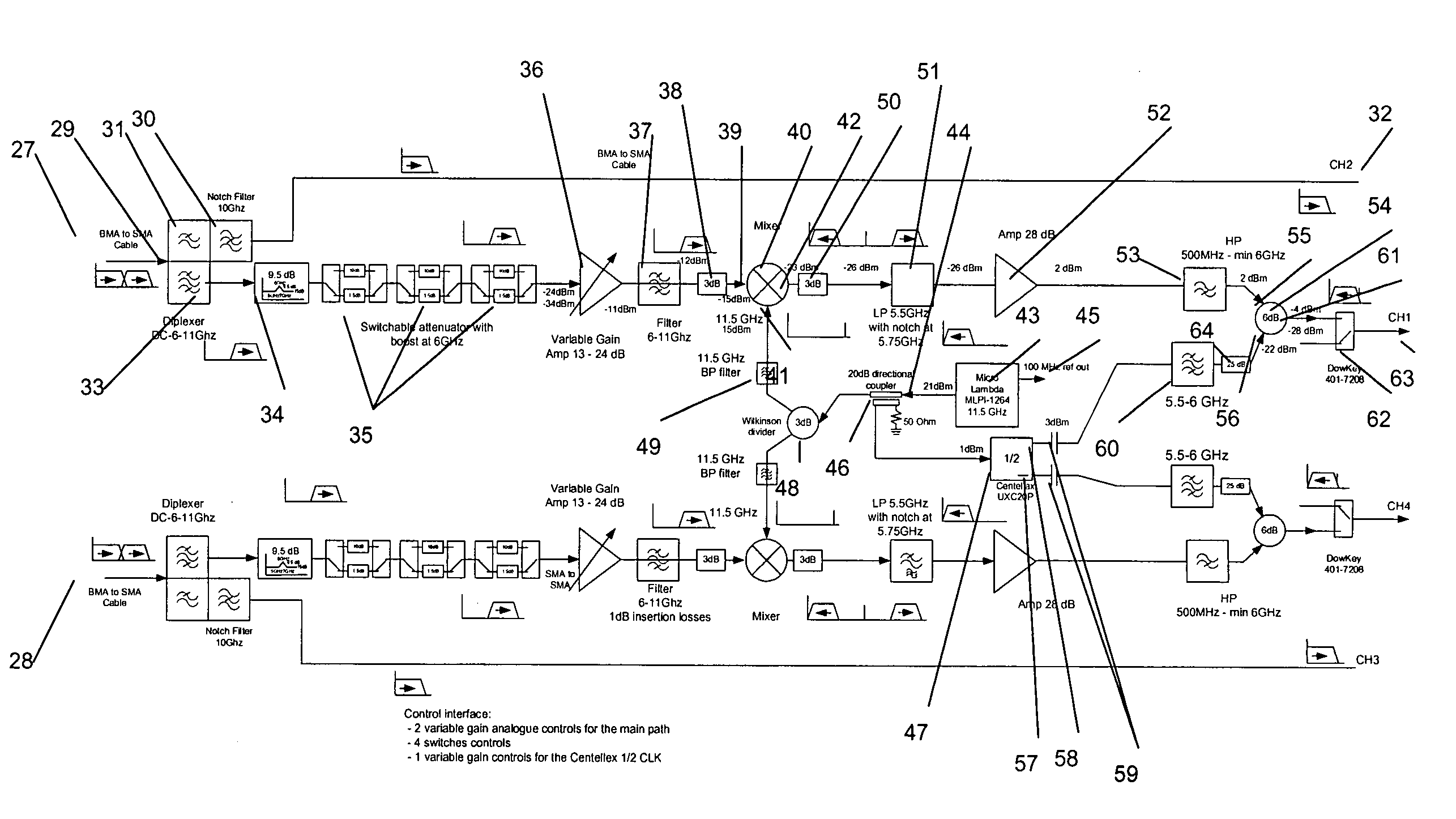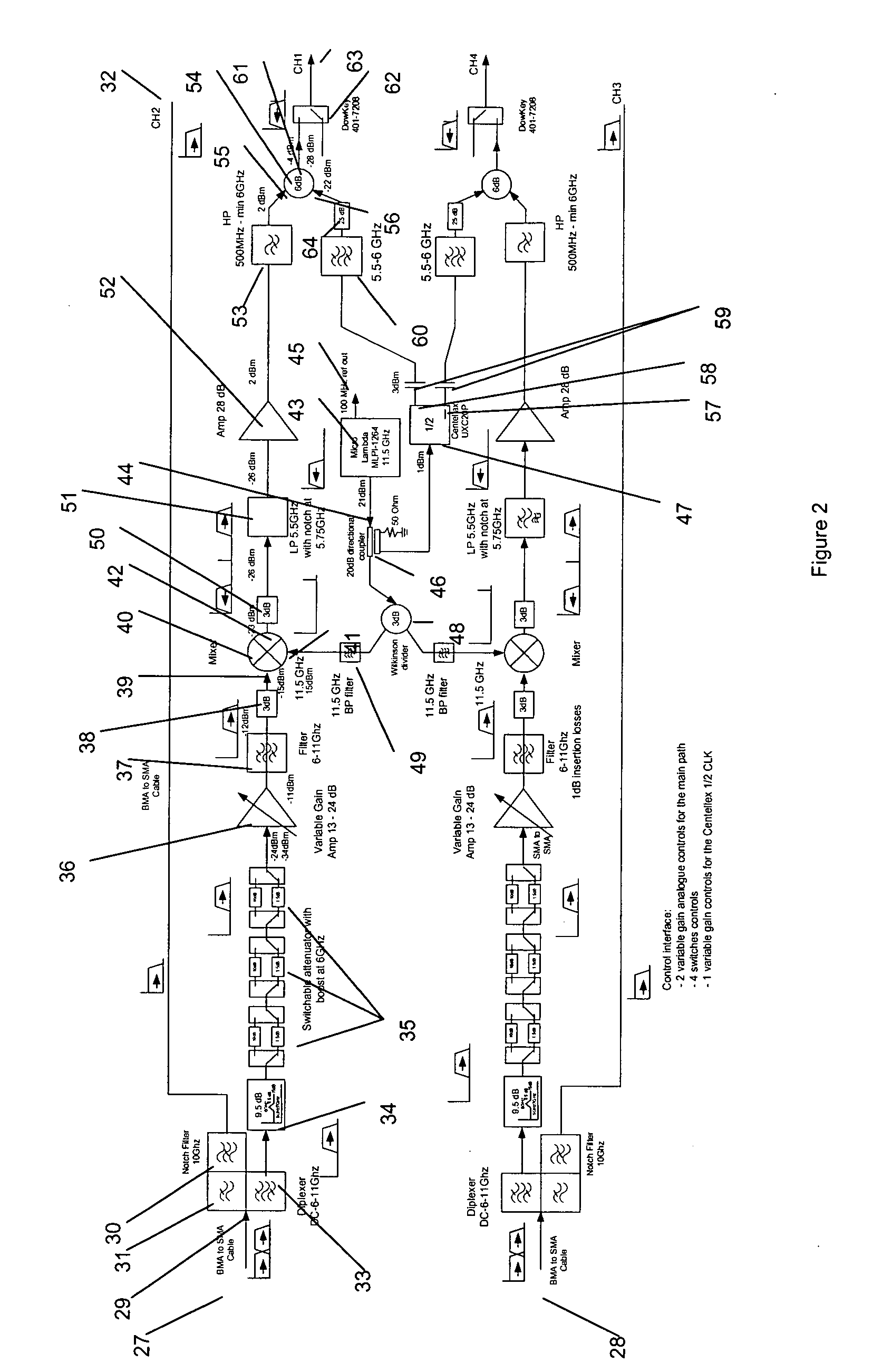High bandwidth oscilloscope
a high-bandwidth, oscilloscope technology, applied in the field of digital oscilloscopes, can solve the problems of inability to adapt to the use of a single instrument, inability to match the digitizer, and inability to accurately digitize the waveform, so as to achieve the effect of improving the bandwidth of the oscilloscope and enhancing the bandwidth
- Summary
- Abstract
- Description
- Claims
- Application Information
AI Technical Summary
Benefits of technology
Problems solved by technology
Method used
Image
Examples
Embodiment Construction
[0045] The following description details certain operational and structural aspects of various preferred implementations and discusses related design considerations. These implementation details are intended to be illustrative and not limiting. Unless expressly stated otherwise, it should be understood that the components and design approaches described below may be modified to suit other particular applications.
[0046]FIG. 1 shows a digital oscilloscope [11] oscilloscope having four input channels CH1 [1], CH2 [2], CH3 [3], and CH4 [4] connected to the inputs to each of four front-ends [5] [6] [7] [8]. In accordance with the embodiments described herein, the oscilloscope [11] may be configured to digitize waveforms at sample rates of up to 20 GS / s at bandwidths up to 6 GHz into memories up to 50 Mpoints long. Channels 1 [1] and 2 [2] are grouped together into a channel 1 / 2 grouping [9] and channels 3 [3] and 4 [4] are grouped together in a channel 3 / 4 grouping [10]. In the channel ...
PUM
 Login to View More
Login to View More Abstract
Description
Claims
Application Information
 Login to View More
Login to View More - R&D
- Intellectual Property
- Life Sciences
- Materials
- Tech Scout
- Unparalleled Data Quality
- Higher Quality Content
- 60% Fewer Hallucinations
Browse by: Latest US Patents, China's latest patents, Technical Efficacy Thesaurus, Application Domain, Technology Topic, Popular Technical Reports.
© 2025 PatSnap. All rights reserved.Legal|Privacy policy|Modern Slavery Act Transparency Statement|Sitemap|About US| Contact US: help@patsnap.com



